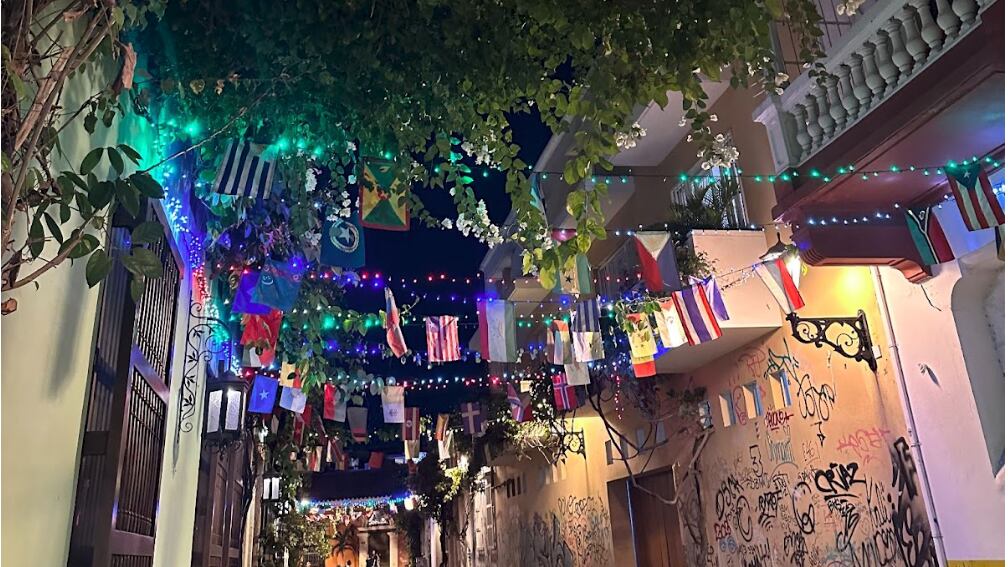There’s a silent party on the streets of Los Angeles. Loose confetti tussle next to plastic crates of crisp, golden Modelos. The piñata sways intact, as if there are no desperate children left to claw at its bleeding candies. Even the Mariachi band left early. The party started weeks ago, but there’s hardly anyone left.
Hispanic Heritage Month began quietly on Sept. 15 and continues through Oct. 15. But this year’s festivities feel subdued, overshadowed by invasive ICE raids and rising anti-Latinx rhetoric, marked by unlawful accusations of immigration status.
Despite these systemic challenges, the community continues to rise, building strength and resilience in a tumultuous time. They confront these obstacles not by ignoring them, but by redefining what it means to be Latine in today’s political climate.
The celebrations may be quieter—whether by necessity or protection— but they echo through the homes of individuals who weave heritage and pride into their everyday lives.
Laura Maria Gonzalez, a university professor from Colombia, reflects on the layered nature of the identity. “I think the biggest misunderstanding in Latino culture is that we are a monolith,” she says. “Each country in Latin America has a different culture, dialect, and foods; it encompasses so many backgrounds.”
Hispanic Heritage Month was first authorized in 1968, when the U.S. Congress asked the president to issue a proclamation designating a week in September to honor Hispanic heritage.
In 1988, the celebration was extended to a full month.
September was a deliberate choice. Many Latin American countries– such as Chile, El Salvador, Guatemala, and Mexico– celebrate their independence this month. The U.S. intended to symbolize unity, but in doing so, it also reinforced a homogenized, Eurocentric identity. The term “Hispanic,” for many, has erased indigenous and Afro-Latino roots.
According to Pew Research, no single pan-ethnic term has been fully embraced. “Hispanic” and “Latino” have both been criticized. Regardless, 52 percent of the Latino population prefer the term “Hispanic” while 29 percent prefer “Latino”.
“Some countries don’t want to be identified as Latino because they’ve felt excluded for so long,” Gonzales explains. “In the Caribbean, some people identify as Latinos geographically, but culturally, they feel different.”
Historically, Hispanic communities have been shaped by two types of racism: the discrimination they faced from outside groups, and the internalized racism born from Spanish colonialism. That legacy created rigid social hierarchies that still linger today.
Language is another complex layer.
Spanish, often seen as a cornerstone of Latin culture, is both a unifier and a reminder of colonialism. Carlos Gonzalez, a college student from the Dominican Republic, shares this tension.
“I’m glad that I’m able to speak Spanish,” he says, “but I wish I spoke my Indigenous language, Taíno. Speaking Spanish came at the expense of colonization.”
Only 7.5 percent of the population in Latin America speaks an indigenous language, the highest percentage in Paraguay, where 49 percent speak their mother tongue.
At least 11,000 people speak an indigenous language in Los Angeles County alone.
Still, identity isn’t limited to language or birthplace. Naila Gomez, who has never been to the Dominican Republic, finds connection through family stories. “I think the most important way to keep my heritage alive is keeping in touch with my grandparents and always staying curious about their upbringing,” she says.
“Our conversations always seem to circle back to their life in DR. Holding onto these stories helps preserve their culture in my life.”
The party isn’t over… it’s just moved indoors. Happiness now lives in the comfort of family and tradition, but it still deserves to spill into the streets of Los Angeles.
If there’s one message to carry through the month, let it be this: the community is not fading– it’s vivaciously thriving.
“Seeing businesses disappear is disheartening,” Carlos says, “but it’s representative of how much impact the Latine community has in LA and across the country. We are impactful.”
To be Hispanic or Latine is to live freely in the face of adversity, so freely that existence itself becomes an act of rebellion. The month will never die. The fruits of labor have not been in vain. People are never illegal— only actions are.
